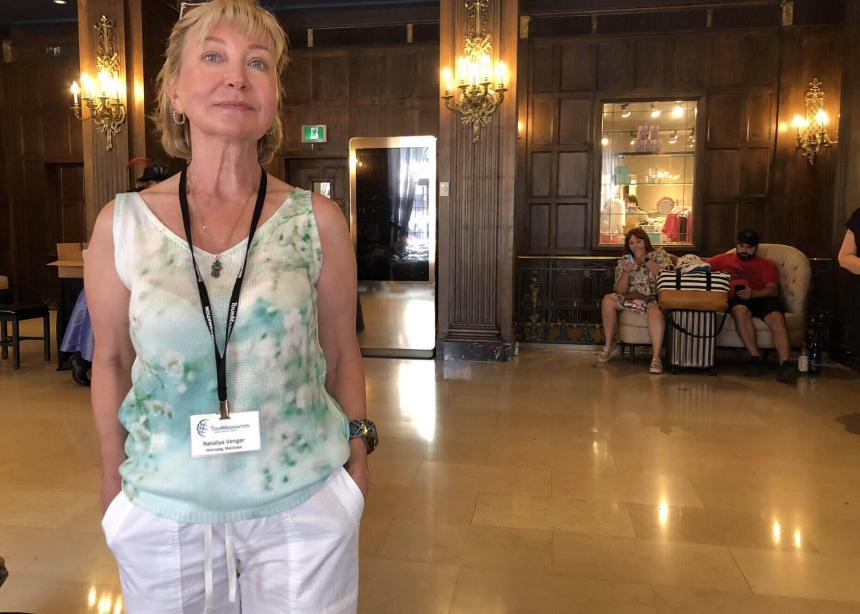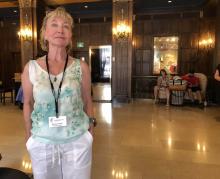For Nataliya Venger, a participant in the “Memories of Migration: Russaender Tour 100,” the hardship and suffering faced by Mennonites a century ago at the hands of the Soviet Union is unfortunately part of her own life today.
Venger is a refugee from Ukraine, having fled the fighting in June 2022.
Back home in Ukraine, she researches Mennonite history in that country as a professor at Dnipropetrovsk National University.
Now she is continuing that research as a visiting scholar at the University of Winnipeg. Her time in Winnipeg is made possible by funding from the D.F. Plett Historical Research Foundation.
Venger’s daughter is safe in the U.S., but her husband is in the Ukrainian military fighting the Russians.
Her interest in Mennonites began in the early 1990s when secret archives containing files about Mennonites in Ukraine were opened to researchers.
That’s when she was sent by a professor to one of the regional archives to learn more. It was then she first learned about Mennonite life in Ukraine.
“After two weeks, I understood that it would become the subject of my life,” she told Canadian Mennonite in 2022.
“Mennonites were a small group, but they were involved in everything. Their [path] indicated all the changes in the Russian empire. I see so many connections with the history of the Ukrainian people,” she said.
Her research into Mennonites in Ukraine led her to conclude, “I can’t understand the history of Ukraine without the Mennonites’ presence . . . their history and the history of Ukraine is entangled. Whatever happened to the Mennonites happened to Ukrainians.”
Now, as part of the tour, Venger is looking forward to meeting some of the descendants of the 21,000 Mennonites who left Ukraine between 1923 and 1930.
“I want to hear their stories,” she said, noting the Mennonites she has met are “always ready to tell their stories.”
Based on her experience with Mennonite tour groups in Ukraine, Venger expects participants in this tour will end up being a “very close community” by the time it is over.
And while she is enjoying the tour so far—meeting people, seeing the sights in Quebec City—it is tinged with a bit of sadness when she thinks about what is happening in Ukraine today.
“I am always checking the news,” she said. Her house is “still standing,” but that could change any moment due to Russian bombing.
She is also thinking about her husband, Oleg.
“I don’t know where he is or how he is doing,” she said quietly, noting that, due to military secrecy and his role in the fighting, he is unable to stay in regular touch with her.
“I hear from him occasionally,” she said.
Tour participants and others will get a chance to hear Venger speak about her research at “The Russlaender Mennonites: War, Dislocation, and New Beginnings,” a July 14-15 conference sponsored by the Centre for Transnational Mennonite Studies at the University of Winnipeg.
Venger will speak on the topic, “The Mennonite Verband and Soviet Power in the 1920s: A Game on a Razor’s Edge.”
John Longhurst is a freelance writer from Winnipeg who is blogging about the tour.
Read John's previous posts about the tour:
MoM 100: How the CPR helped Mennonites
Train tour prepares to leave the station



Add new comment
Canadian Mennonite invites comments and encourages constructive discussion about our content. Actual full names (first and last) are required. Comments are moderated and may be edited. They will not appear online until approved and will be posted during business hours. Some comments may be reproduced in print.